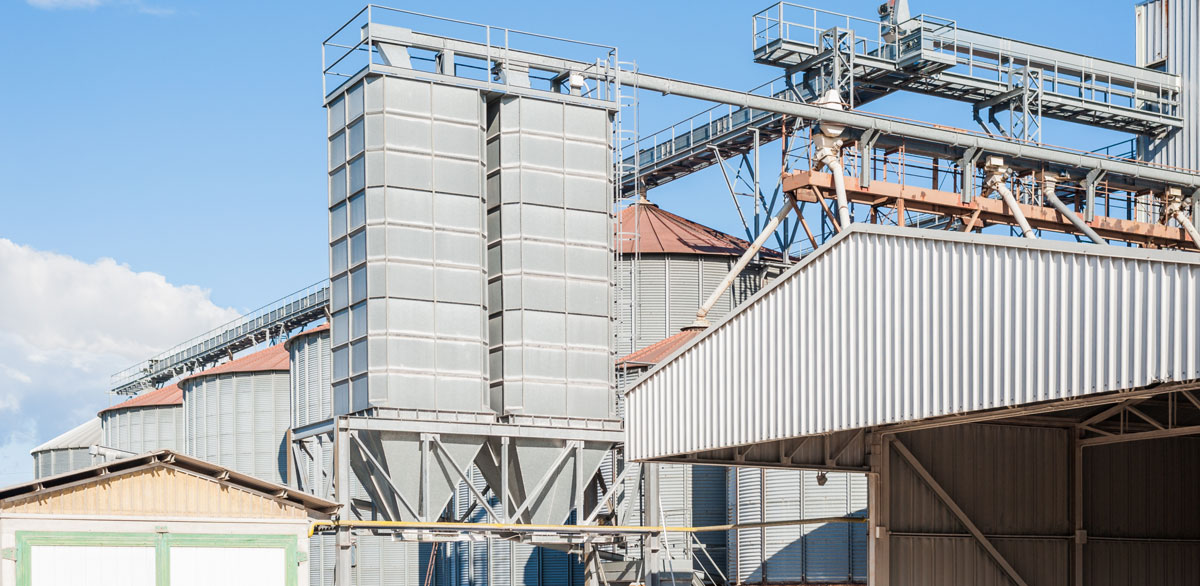Common Ways Moisture Enters Baghouse Ventilation Systems

How does moisture get inside a baghouse? There are five common ways as explained by Joe Haney, IAC Product Specialist. In this Tip-of-the-Month video series, we’ll take a look at the five most common ways moisture enters a baghouse, and offer solutions you can implement to prevent this problem and keep your baghouse dust collector operating at peak efficiency.
1. Door Seal Failures
⚠️ Problem(s):
Door and inspection port seals are very important on a suction system. They prevent outside air from leaking into the system and also prevent moisture from entering. Seals are usually made from silicon rubber or fiberglass. Seals can become miss-aligned, compressed, or disintegrate because of heat or chemical attacks.
🛠️ Solution(s):
Check the inside of the doors for bad or misaligned seals. There will be air tracks in the dust on the floor. Suction systems must have good door seals, so it’s recommended that any time there is a filter bag change out, you also replace the door seal. This in a cost-efficient way to ensure this problem does not occur.
"The fan on your baghouse is always going to pull air from wherever it can get it the easiest. Therefore, if outside air is leaking into your baghouse around doors and ports, then that’s were your system is going to get airflow, as opposed to back at your process source."
In this Tip of the Month video, IAC Product Manager Joe Haney gives tips on inspecting door and access port seals for leaks, and gives recommendations on when to replace. Contact IAC for our Door Seal Guide and get a quote on the right type of seal material for your application!
2. Holes in Ductwork
⚠️ Problem(s):
Any hole or leak in the duct-run will allow ambient air to be sucked into the system. This can greatly reduce the designed air draft to properly ventilate the system.
🛠️ Solution(s):
A monthly visual inspection of the entire duct run is highly recommended to ensure your system is not losing draft due to these common air leak origins.
3. Pulse Jet Cleaning System & Compressed Air Delivery
⚠️ Problem(s):
The clean air plenum (or ‘top’ of the baghouse) is typically cooler than the dirty air plenum. This is, in part, caused by the compressed air used in the cleaning system. Air, when compressed, cools in temperature. If there is water vapor in the clean air plenum, the temperature changes may accelerate water droplets forming, causing corrosion or other problems, such as backside filter blinding due to agglomeration.
🛠️ Solution(s):
All efforts should be made to ensure the compressed air in your plant is dry and clean. If this is a struggle, modifications of the baghouse's clean air system, such as adding a purge valve on the air header or a line filter prior to header to pull out moisture. Our IAC baghouse specialists can help troubleshoot your system, and test types of filters to ensure your system is operating at peak performance.
Joe Haney offers several easy-to-implement solutions to fix moisture issues related to compressed air delivery that will save your plant time and money.
4. Your Process & Geographic Location
⚠️ Problem(s):
Many baghouses ventilate manufacturing process equipment designed to pull moisture out of a product, such as rotary dryers, fluid bed dryers, flash dryers, and certain types of classifiers. Naturally, some of this moisture eventually finds its way into the baghouse. While this is a normal part of many production processes, it can be worsened by two common factors.
🛠️ Solution(s):
First is that your plant is geographically located in a high humidity region, such as a coastal area. Second is that your process is batched and shut down every night or on the weekends.
Both operating conditions could pass through what’s called dew point, where water vapor in the baghouse becomes water droplets, which condense and create lots of operational issues in the baghouse.
These upset conditions are a little more complex to solve than other issues we've discussed. If you think either of these factors are contributing to moisture issues in your baghouse, please give us a call.
1. Airlock Seal Failure
⚠️ Problem(s):
The airlock at the bottom of the baghouse dust collector is designed to evacuate dust out of the baghouse's collection hopper. It also acts as a mechanical seal. If it fails to seal the bottom of the baghouse, outside air can carry moisture into the baghouse.
🛠️ Solution(s):
The issue could be simple, such as the airlock is old and worn, and will depend on the type of airlock. If it is a rotary valve, the rotating veins may be worn down out of spec, allowing air to get by. If the airlock is a double tipping valve, there may be something wrong with the actuator that's not allowing it to close completely.
There are lots of ways to troubleshoot moisture issues in a baghouse dust collector. IAC's aftermarket parts specialists or Blue Crew Field Service teams are here to help!



